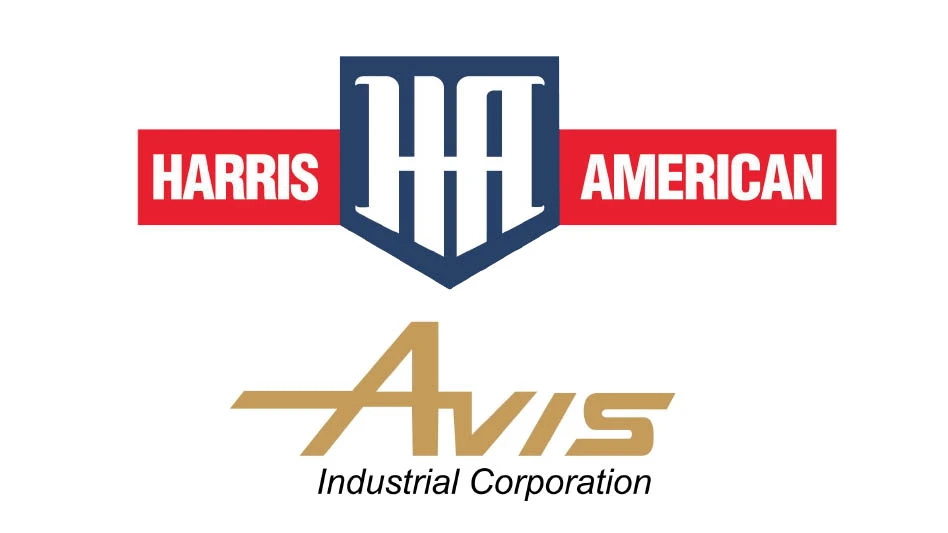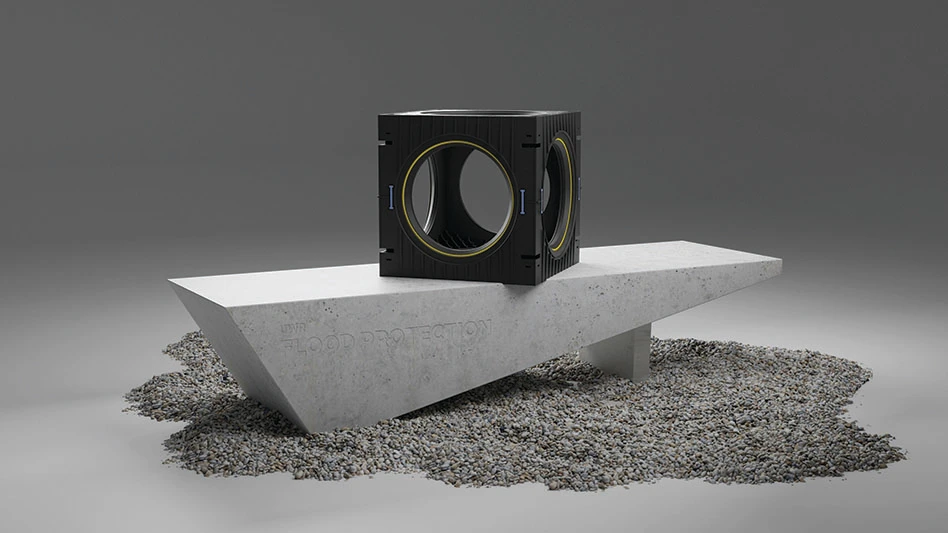
Image courtesy of Rumpke
Rumpke Waste & Recycling announced in February plans to construct a $50 million recycling facility in Columbus, Ohio, incorporating state-of-the-art technology to develop what the Cincinnati-based material recovery facility (MRF) operator says will be the most technologically advanced recycling center in the United States.
The facility is expected to be operational in 2024, and Director of Recycling Jeff Snyder, a 29-year veteran in the recycling industry who’s been with Rumpke more than two years, says it wasn’t enough to only look two years into the future when the MRF comes online. Rather, the idea was to account for the evolving recycling stream, leaving room for technological and operational improvements in the future to improve recovery rates.
“I’m not just happy with what we did yesterday. I want to know what can we do tomorrow and what’s on the horizon,” Snyder says, adding that when he got the opportunity to develop the new 60-ton-an-hour facility that can serve central and northern Ohio, the next step was finding the right technology.
“The opportunity then becomes what technology is available out there in the marketplace to be able to make this the most technologically advanced facility in North America,” he says. “That’s what I challenged myself with.”
Snyder says he traveled across the country, touring MRFs from the East Coast to the West Coast “and everywhere in between,” and met with machine manufacturers to stay on the pulse of the latest technology, familiarizing himself with robotics, artificial intelligence (AI) and other sorting technology to incorporate that knowledge and experience into the new Columbus facility.
“When you want to increase revenue and you want to be on the cutting edge to add more commodities that can be pulled out of the waste stream, you have to think about the technology that’s available out there in the marketplace,” Snyder says.
Rumpke ultimately chose Machinex Technologies Inc., a North Carolina-based recycling equipment provider, as well as construction company Elford Inc. and architect Moody Nolan, both based in Columbus, with Rumpke East Area President Andrew Rumpke saying at the time of the announcement, “We take our partnerships very seriously as they have a lasting impact on our business and our community.”
Snyder adds, “I’m not building this facility for two years from now, which is when we’re going to be up and operational. I want to design this facility so that you can keep up with a recycling stream 15, 20 years from now.”
A look at the technology
Snyder says when it comes to sorting, he wanted to take some of the burden off the presort belt, so the facility is implementing a sizing trommel. “I can take all that material [and] instead of spitting it out on a conveyor belt, I can spit it out onto three conveyor belts,” he says. “I can take all that material and cut it down by size.”
He adds, “It allows us to see the material better so we can sort properly. It also gets the glass out of the system the very first thing.”
It also was important to limit downtime and maintenance wherever possible.
The Columbus facility will feature 19 optical sorters as well as ballistic separators to further segregate material and eliminate the need for screens, which typically require lots of maintenance. “There will be a bank of six optical sorters that will clean the fiber, so we’re doing fiber and plastic segregation with optical sorters instead of what has traditionally been done with screens,” Snyder says.
“This MRF will have no screens it in,” he adds. “All the sorting is going to be done with ballistics and optics.”
One of the innovations Snyder is most proud of is the implementation of AI to be used alongside the optical sorters. Because opticals cannot decipher between various grades of clear polyethylene terephthalate (PET), for example, the AI technology will, according to Snyder, not only identify material by what the light spectrum sees in the optical sorter, but by shape, color and size. “It gives the optic even more of an opportunity to make the right decisions,” he says.
In facilities without advanced sorting technology, the material typically ends up getting baled together, with Snyder estimating about 90 percent of facilities in the United States bale together varying grades of PET. That’s not a knock on those facilities—in fact, Snyder notes it’s fairly standard in the industry. “What I’m going to do with this facility is segregate clear PET from colored PET from thermoforms, so instead of one grade of PET, we’ll have three.”
The Columbus facility also will try to address the plastic bags that inevitably end up in the recycling stream despite not being accepted at MRFs. Snyder says his team is designing suction devices, or reception pipes, into several of the optical sorters to pull the bags out of the air flow and put them into holding bin that will feed into a baler to recover the bags.
Snyder says one of the more unique aspects of the facility will be its sampling ability, as municipalities will be able to come to Rumpke to analyze their recycling programs for various materials or contamination. Traditionally, that type of analysis has to be conducted by hand sorting, but the new recycling center will have the technology to take a portion of material from a particular city, municipality or county, run it through a system and, within an hour, report the exact percentage of commodities in a particular recycling program.
“That really helps folks get better, right?,” Snyder says. “If I’m a city manager or a mayor and I want to know how I’m doing at recycling, this can really help you do that, and you can do it over time to see how you’re doing.”
He adds, “Usually when you ask for those types of audits they’re a pain in the butt because they’re very manual. They upset operations. It’s just very difficult to do. In this facility, we’re going to design that in so it’s not difficult to do that.”
Design for the future
Rumpke encourages innovation, Snyder says, wanting to stay on the cutting edge of recycling. “When you own 14 landfills, permitting landfills is very difficult today [and] you need to save space for those landfills to be able to operate your business,” he adds. “When you’re a waste and recycling company, it’s important to save air space for what needs to be used as waste, and the way we can do that is pulling recyclables out of the landfill.”
Snyder continues, “So, how do we become supper innovative, come up with ideas to not only add more commodities to the recycling stream but to increase revenue by going deeper into the recycling stream and make more quality products that can go to our end users? That’s what drives that [innovation].”
Improving recovery rate was key in designing the MRF, and Rumpke has learned a lot from the operations at its Cincinnati MRF. Snyder says the company is having to reinvest in that MRF, which is nearly nine years old, to keep up with the change in containers, noting they’re seeing more glass, more PET and more used beverage cans coming through the line than they’ve ever seen before. “If you’re trying to keep up with that and there’s less paper and the stream changes, what do you have to invest in from a capital standpoint to keep up with that stream? … You have to be alert to that.”
“If people put forth the effort to make a decision to put a water bottle in the recycling bin and it gets dumped on our floor at the MRF and we have a responsibility to sort it, then I think we should be able to sort all of it,” he says. “We need to design the MRF and the sorting equipment as such that we can recover 98 percent of material that shows up at the MRF.”
Snyder adds, “You have to have the equipment and you have to have throughput and you have to have the maintenance—you have to have all those things to make it happen.”
Get curated news on YOUR industry.
Enter your email to receive our newsletters.
Latest from Recycling Today
- Enfinite forms Hazardous & Specialty Waste Management Council
- Combined DRS, EPR legislation introduced in Rhode Island
- Eureka Recycling starts up newly upgraded MRF
- Reconomy Close the Gap campaign highlights need for circularity
- Nickel carbonate added to Aqua Metals’ portfolio
- EuRIC, FEAD say End-Of-Life Vehicle Regulation presents opportunity for recyclers
- Recyclers likely to feel effects of US-China trade war
- BCMRC 2025 session preview: Navigating battery recycling legislation and regulations





